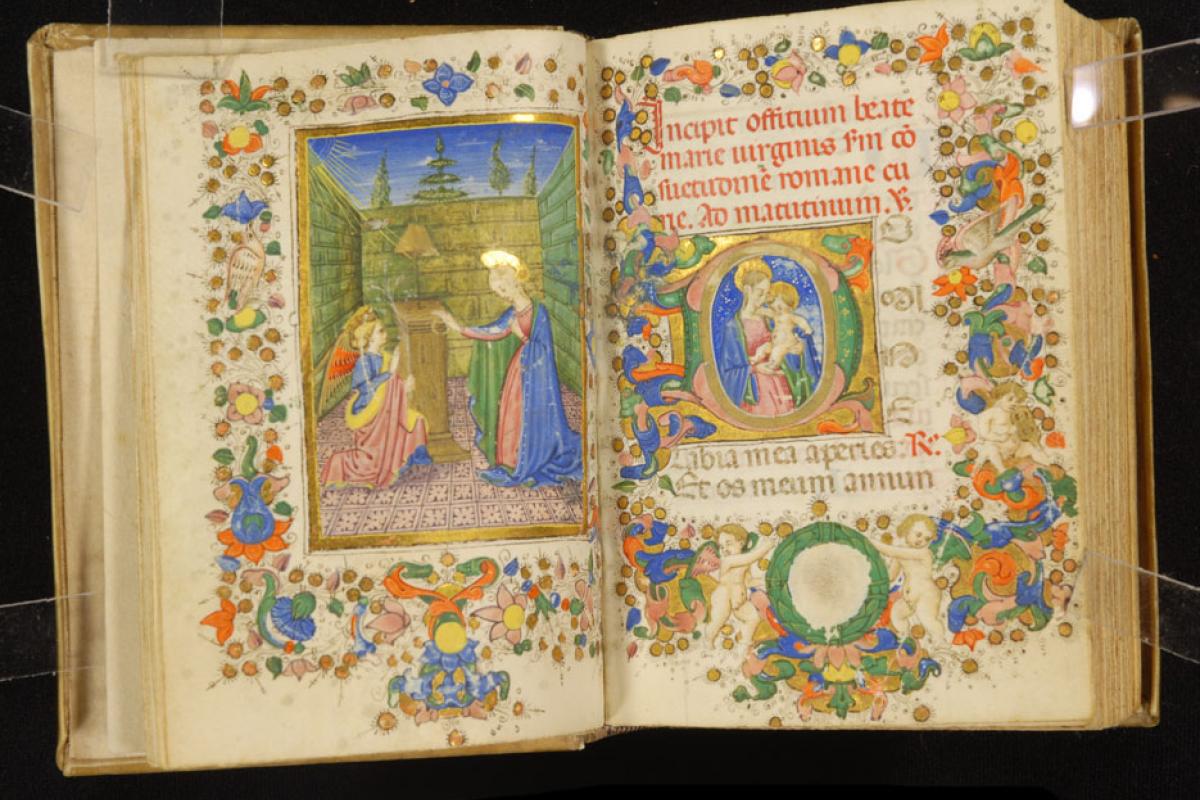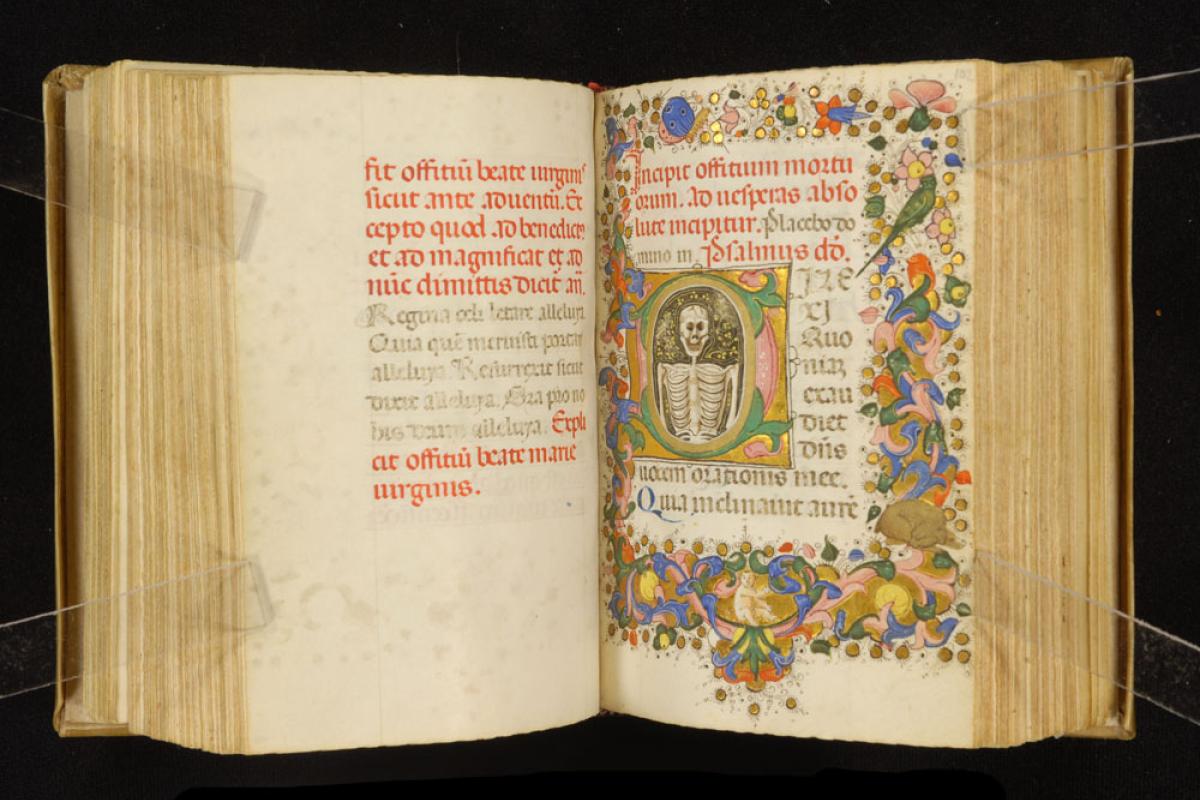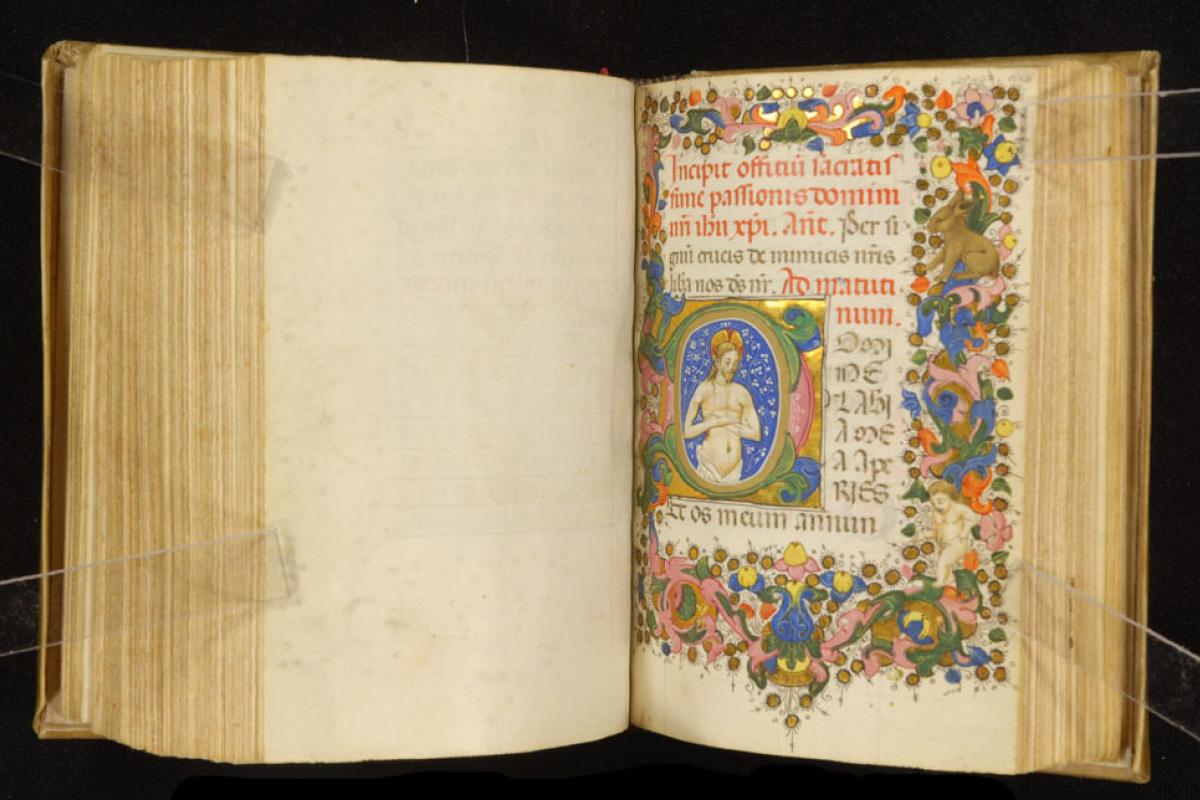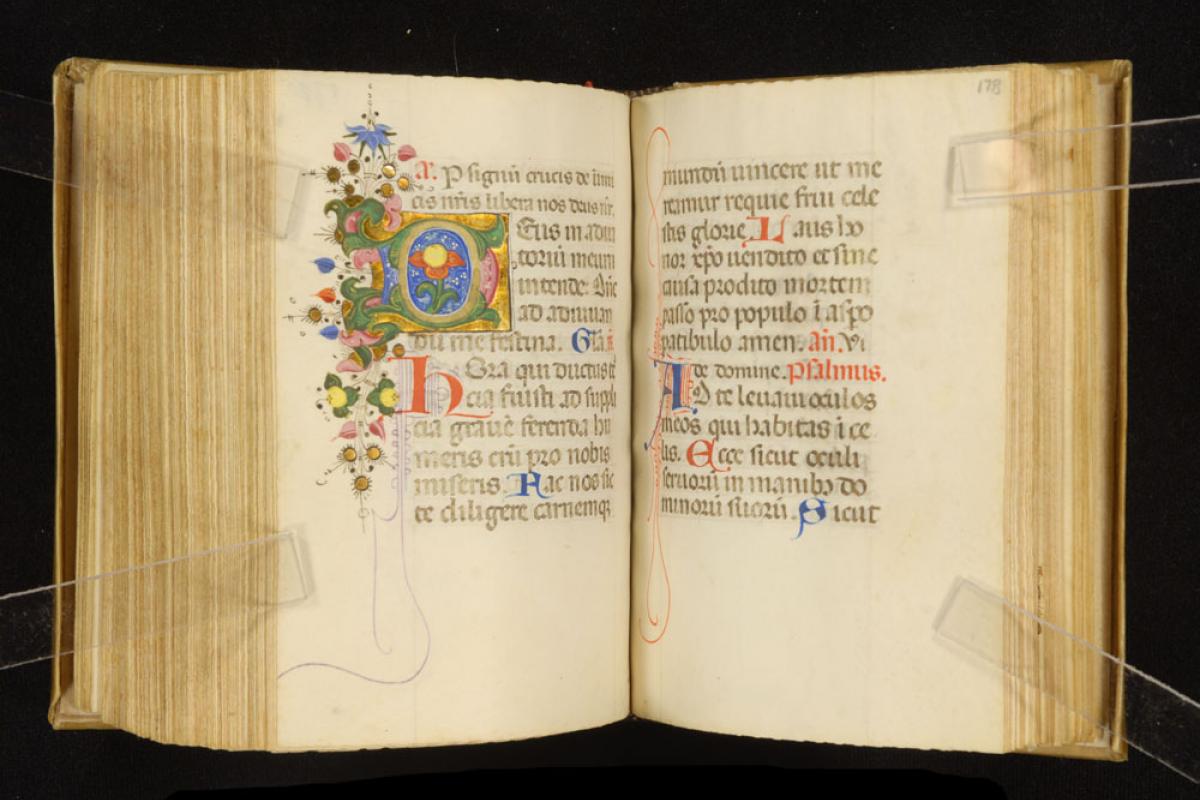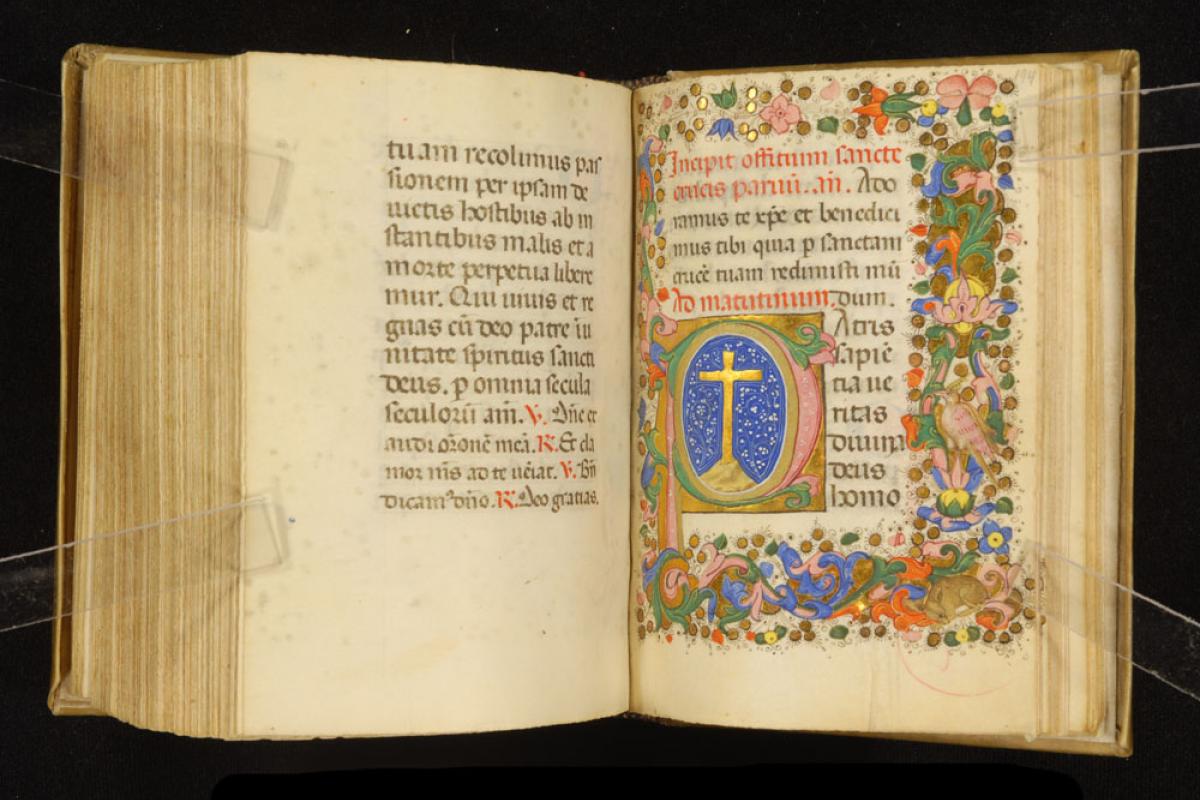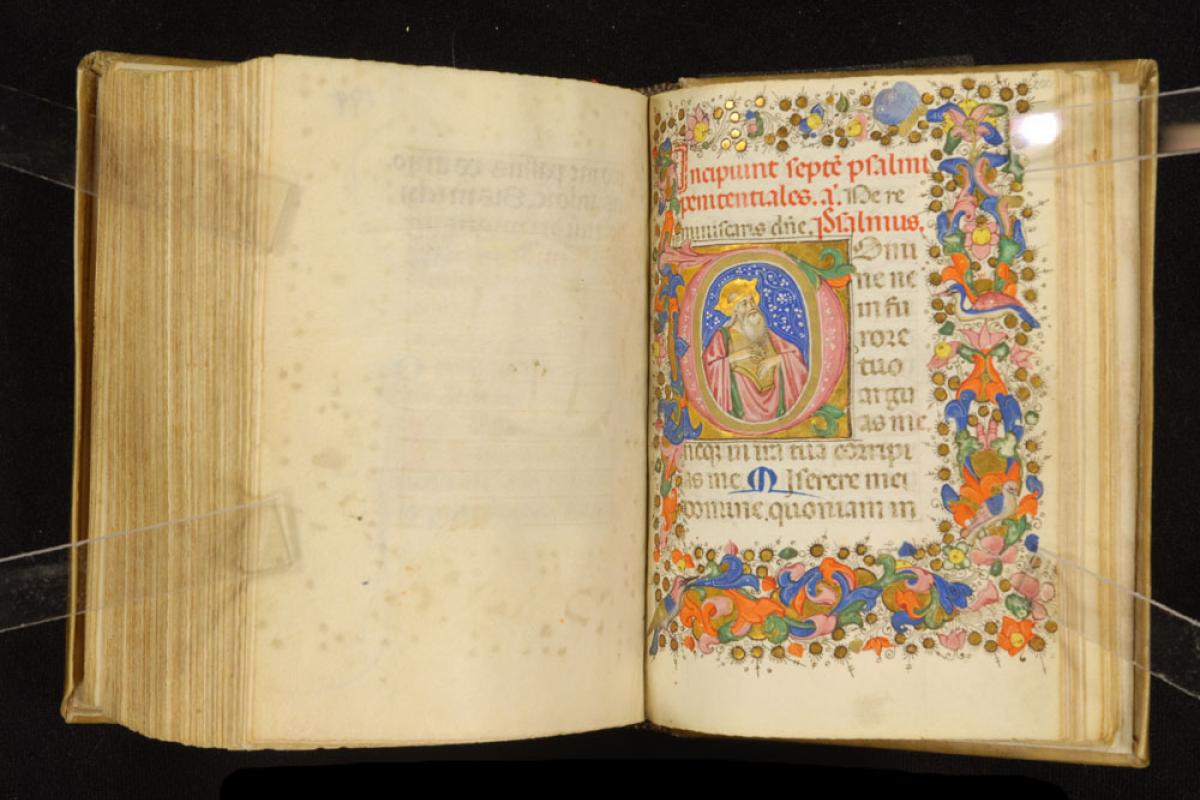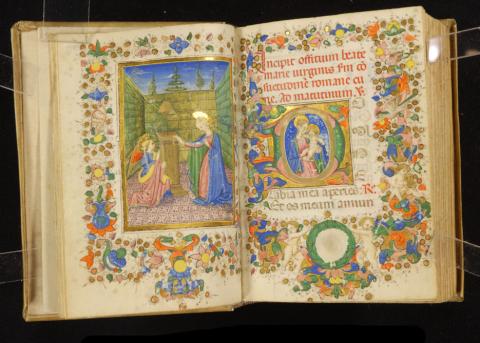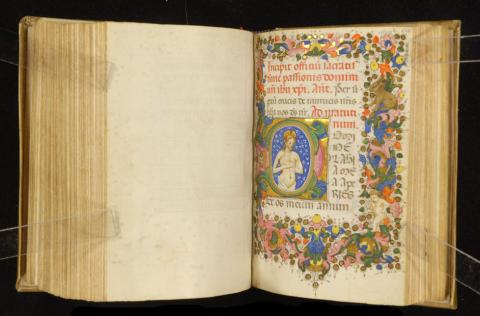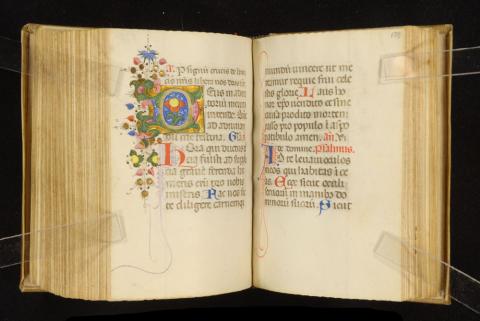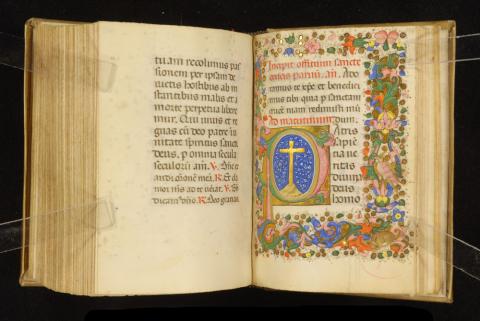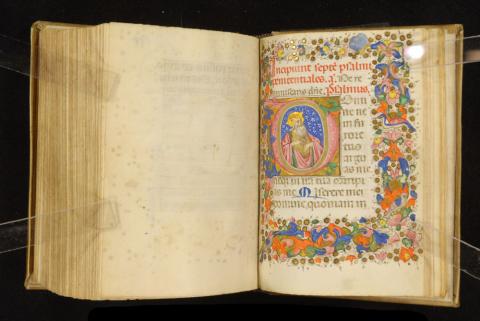Book of Hours, Use of Rome
Book of Hours, Use of Rome
Italian (Florence), ca. 1475
Images:
folio with Annunciation and page with initial "D" with Virgin and Child (Hours of the Virgin, Matins) (fols. 13v-14r)
folio with text page with initial "D" with skeleton
folio with initial "D" with Man of Sorrows
folio with a large 4-line initial
folio with initial "P" with Cross (fols. 193v-194r)
folio with initial "D" with David playing the psaltery
parchment
height 12.7 cm
width 9 cm
228 leaves (13 x 9 cm). Rounded Italian Gothic hand. 13 lines. Gatherings mostly of 10. Text in Latin: Calendar, Hours of the Virgin, Office of the Dead, Hours of the Passion, of the Cross, Psalms, Litany. Two miniatures and four historiated initials, many lavishly decorated initials and borders. Binding: vellum.
Provenance: House of Farnese; Signor Cattenacio (1736); Joachim Besozzi, Abbot of Santa Crucis if (both owners identified in an inscription on an enclosed vellum leaf); Scribner’s, N.Y.; Mr. and Ms. S. Eberly Thompson collection (Ms. 7)
Mount Angel Abbey Library, Ms 66
Brown, Medieval Portland Research Assistant
This Italian prayerbook differs greatly from its French and Flemish contemporaries in the Mount Angel collection: in its layout (quinions, rather than quaternions), script (Italian Gothic, not batarda), order of texts, and decoration (attenuated figures, elaborate border patterns of vegetal motifs with gold orbs and birds or putti). Based on comparanda, the book was likely produced in a Florentine or Ferrarese workshop during the last quarter of the fifteenth century.
Diebold, William. The Illustrated Book in the Age of Printing: Books and Manuscripts from Oregon Collections. Portland, OR: Douglas F. Cooley Memorial Art Gallery, 1993, p. 11 - Quoted with permission
6. Book of Hours, Use of Rome
Italy, second half of the 15th century
Mount Angel Abbey Library, MS 66
Fols. 193v-194f: Text pages and initial "P" with cross
9. Book of Hours, Use of Rome
Flanders, c. 1475
Mount Angel Abbey Library, MS 63
Fols. 32v-33r: Christ in the Garden of Gethsemane and Text page with border
10. Book of Hours, Use of Troyes (Boucherat-Peley Hours)
Troyes.c. 1475
Mount Angel Abbey Library, MS 65
Fols. 17v-18r: Text page and Crucifixion
These three manuscripts; made at approximately the same time in three different parts of Western Europe, indicate the universality of the Book of Hours in the late Middle Ages. Each manuscript is open to the same text, the Hours of the Cross, a series of prayers meant to remind the viewer of Christ's passion. In the Flemish Book, number 9, this text is illustrated with a miniature of Christ in the Garden of Gethsemane. In the Italian Book, number 6, the initial beginning the same text contains an image of Christ's cross on a hill. In the French Book of Hours, number 10, is a miniature of the familiar scene of Christ crucified.
That all three of these manuscripts contain the same texts is significant; the standardization and widespread distribution of identical texts is often considered a result of printing, impossible in a scribal culture. Books of Hours were so popular in the Middle Ages, however, that they were made by hand with a mechanization not unrelated to the mechanical production of early printed books. One sign of the assembly-line-like production of manuscript Books of Hours like these is their patronage. Of the three, only number 10 was made to order, the traditional reason medieval illuminated manuscripts were made. Its patrons were Edmond le Boucherat, the mayor of the city of Troyes, and his wife, Jeanne le Peley. Many pages of the book bear either their coats of arms or their interlocked initials. Numbers 6 and 9, however, were made not for a particular patron but for the market. (There is a blank space for a coat of arms in number 6 to allow its buyer to have it personalized.) These two books were made for sale over the counter and in that sense are like most early printed books.
Wilma Fitzgerald, PhD, SP - Quoted with permission from an unpublished study
Liber horarum. Saec. XV ex. Italy. Florence. FF i (paper) + 229 + i (paper). 128 x 86 (70 x 51) mm., Gothic hand, 13 lines. Miniatures and Historiated Initials: Annunciation, Initial D with skeleton, D with Man of Sorrows, P with cross, D with David playing psaltery. Full borders with animal, vegetable, and human ornament on all pages with miniatures, historiated initials, or 4-line painted initials. Numerous 1 and 2-line initials in red and blue paint. Bound in vellum over cardboard. Farnese family sale in Parma (1736) to Master Cattenacio given to Abbot Cattenacio son of the purchaser who in turn gave it to Dom Joachim (see inscription on detached flyleaf), Joachim Besozzi, abbot of S. Crucis. See Peter Parshall, Illuminated Manuscripts # 16, pp. 38-39.
Calendar, Hours of the Virgin (use of Rome), Office of the Dead, Office of the Passion, Short Hours of the Cross, Seven penitential psalms, Litany, and prayers.

